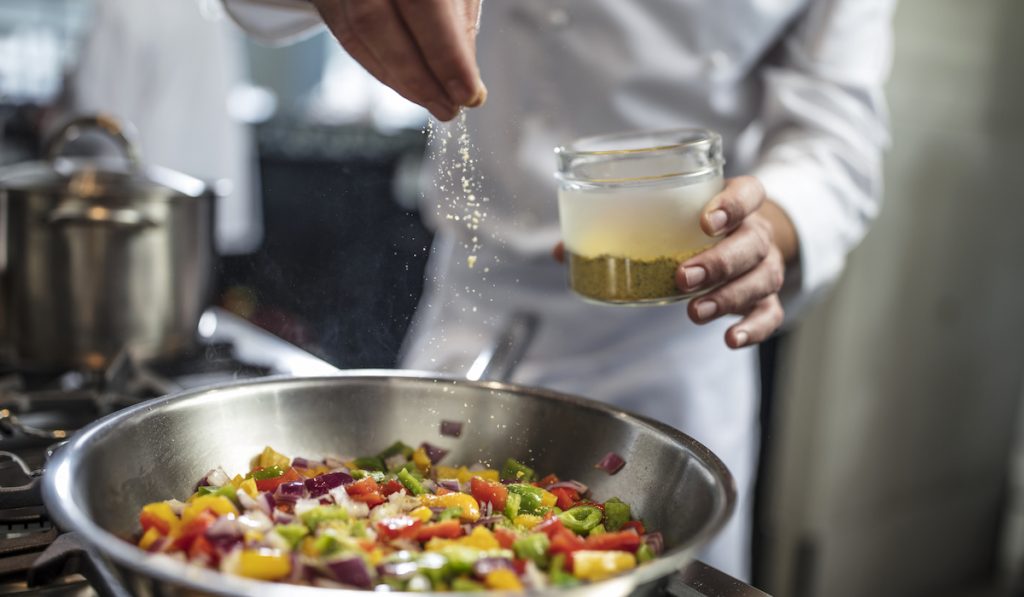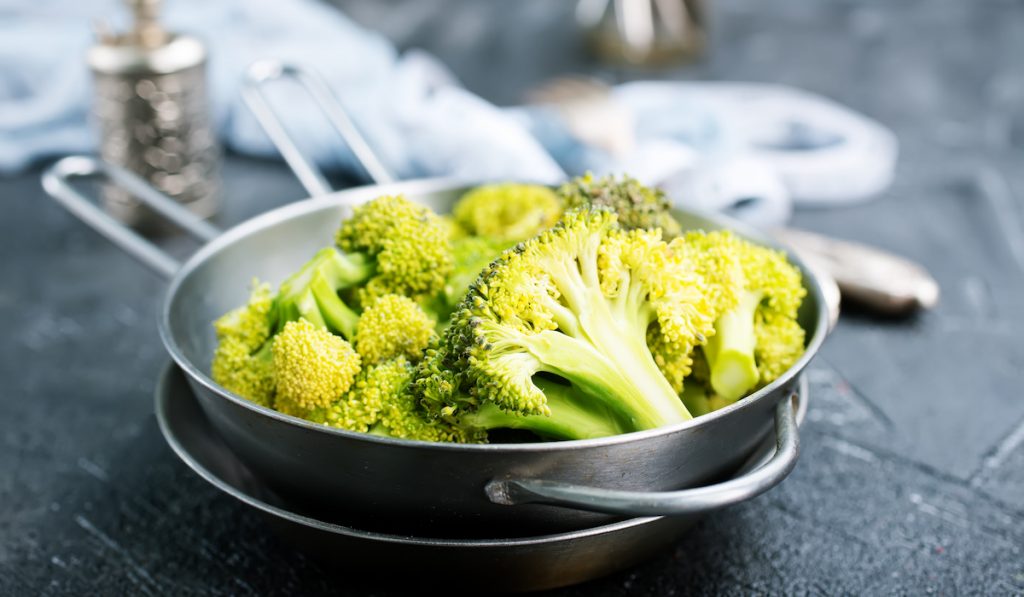Most people have aspirations to eat a healthy diet and live a healthy lifestyle. Sometimes, though, life has a habit of getting in the way.
Just look at 2020. Most people started the year with goals and well-laid plans about what they wanted to achieve, things they wanted to do, and places they wanted to see.
What the pandemic taught us, however, is that sometimes even good plans run into problems.
It’s early in the new year, and, if you’re like a lot of folks, you want to try to eat better, exercise, and improve your health overall.
A big part of that is eating enough nutrient-rich vegetables and cutting out harmful foods like sugar.
But when life gets busy and stressful, there’s not a whole lot of time for meal prep.
You’ve got family obligations, working from home can often mean working around the clock, and takeout is just so convenient.
As more people focus on health and wellness, there is a big emphasis on meal prep as a way to moderate calorie intake and keep things healthy.
Finding ways to make meal prep faster, easier, and add more nutrients into your diet is critical to your success.
One of the ways people are making meal prep easier is by using frozen vegetables.
These days, thankfully, frozen vegetables are widely available and surprisingly affordable. And we’re not just talking about frozen broccoli. There is a lot more variety out there.

But most meal preppers and anyone who has been on a diet know that frozen vegetables don’t always have the consistency and taste that help make eating healthy fun.
Don’t settle for mushy, stale vegetables!
Here are some tips on what you can do to spice up your frozen vegetables and make them a great part of your meal prep going forward.
Table of Contents
Tip 1 – Adding Texture to Frozen Vegetables Will Change the Way You Eat
We’ve all been there. After a stressful day at work or maybe dealing with the kids at home, it’s time to make dinner and handle your meal prep for the week.
It’s the last thing you feel like doing, but you know it has to be done.
Too many times, the default in dealing with frozen vegetables is to fill a big pot of water and dump frozen veggies in until they come to a boil.
Then you dole them out into your food containers and force them down with your grilled chicken or whatever else is on the menu that week.
Meal prep doesn’t have to be this way! Adding texture to your frozen veggies will change the way you view eating your greens.
Here are some great ways to cook them:
- Baked Frozen Vegetables – Baking your frozen veggies is easy and it’s a fantastic way to add some crisp to your food.
Preheat your oven to around 400°F. Spread your frozen veggies out on a baking sheet (you don’t need to thaw them).
Season them appropriately and then put them inside the oven until you see the edges of your broccoli florets or the corners of your carrots start to blacken.
Take them out and give them a try. You’ll get a satisfying crunch in almost every bite! - Use an Air Fryer – People are loving their air fryers.
So much so, that they’ve told all of their friends about it. If you’re alive in 2021, then you’ve probably seen social media posts and hear friends talk about how wonderful their air fryers are.
If you haven’t bought one yet, grab one because they are a healthy way to cook vegetables and other food you otherwise may have fried in oil.
People are having a great time making carrot fries, kale chips, and other vegetables that will go perfectly with your meal prep. - Grill Them! – Skip the potatoes and the corn on the cob and grill some broccoli stalks to go with your burger or steak for meal prep.
To get the best results, flip your frozen vegetables, (if they’re big enough), on the grill frequently to get an even cook throughout.
You can, of course, always boil or steam your veggies.
The main thing with these last two cooking methods is that you have to be careful not to leave them in too long because then they’ll come out mushy and lacking in flavor.

Tip 2 – When It Comes to Seasoning Frozen Vegetables, Go for It!
People who say they don’t like veggies or have a hard time making them part of their meal prep are probably not seasoning them enough.
And, no, we’re not talking about just salt. Salt is an important ingredient, for sure, but depending on your health and fitness goals, you will need to watch how much salt you’re eating.
If you’re watching your weight, then moderate the salt intake.
Here are some great spices to use on your frozen vegetables without having to worry about adding unnecessary calories:
- Garlic powder
- Onion powder
- Chili Flakes
- Tabasco
- Black pepper
- Italian seasoning
There are a lot more different spices that will make your veggies rich in flavor along with the texture we’ve already discussed.
Add liberally because it’s hard to overdo it in your meal prep.
Giving your food a healthy dose of herbs and spices and letting them sit in the container for a day, two days, or more will help soak in some rich taste that can’t be beaten.

Tip 3 – By Draining Your Vegetables, You’ll Get More Days Out of Them with Meal Prep
If you’re one of those folks who like boiled or steamed vegetables, you need to watch how much water is in your veggies to stop them from turning into mush or soaking whatever else you have in your prepped meals.
Wet vegetables are a quick way to a soggy meal that doesn’t taste good at all.
To avoid having too much water in your vegetables, drain them very well after cooking and let them sit out on a cutting board or a nest of paper towels for an hour or so.
That will help draw out more water and keep the texture better. You’re also much less likely to end up with soggy rice, pasta, or whatever else you’ve got for a staple.
No one loves eating grilled chicken or ground turkey in a bed of vegetable water at the bottom of your lunch box.
Draining and drying is the solution.
Final Thoughts
These three tips will help you overcome the veggie doldrums and make getting your vitamins a lot more enjoyable.
With texture and spice, you’ll be looking forward to trying new vegetables and checking out the frozen aisle in the grocery store for more than just broccoli or cauliflower.
Experimentation with healthy foods is a big part of sticking to a meal prep plan because it keeps variety in your diet.
You’ll be much less likely to veer off of your diet and cheat with junk food.
As you get more comfortable with different preparations for frozen vegetables, try mixing things up by adding a bit of spice here and there, trying new cooking methods, and following basic food preparation steps.
Mealtime will become something you look forward to more as you get better in the kitchen.
